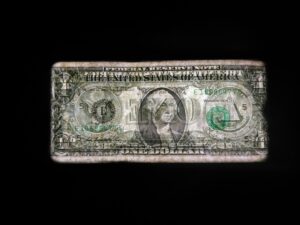

The Golden Age of Gold?
The U.S. dollar is the world’s reserve currency. However, fueled by concerns about its long-term stability, there’s been a growing trend among investors and individuals—many of whom are preppers—to turn to gold as a safe haven asset.
Why the Dollar?
The U.S. dollar has been the dominant global currency for decades. Its strength is often attributed to several factors, including:
- Economic Stability: The U.S. economy is generally considered one of the most stable in the world.
- Political Influence: The United States is a major global power, and its currency is often used for international transactions.
- Trust: The U.S. government has a reputation for maintaining the value of its currency.
Perceived Weakness
Despite these factors, there are growing concerns about the long-term stability of the U.S. dollar. Some of these concerns include:
- Rising National Debt: The U.S. national debt has reached unprecedented levels, raising questions about its ability to repay its obligations.
- Inflationary Pressures: Rising inflation can erode a currency’s purchasing power, making it less attractive to hold.
- Geopolitical Risks: Increasing geopolitical tensions can also contribute to uncertainty in the global economy and may lead investors to seek safe-haven assets.
Gold as a Safe Haven
Gold has long been considered a safe haven asset, meaning its value tends to increase during economic uncertainty. This is because gold is a tangible asset not tied to any particular country or currency. It is also a store of value that has held its purchasing power over long periods.
Factors Driving Gold Demand
Several factors have contributed to the recent surge in demand for gold:
- Economic Uncertainty: Concerns about the global economy, including the potential for a recession, have led investors to seek safe haven assets.
- Inflationary Fears: Rising inflation can erode the purchasing power of fiat currencies—currencies whose value is determined by people’s trust in the government that issues them and the stability of that government’s economy—making gold a more attractive investment.
- Geopolitical Risks: Increasing tensions between major powers can also contribute to uncertainty and drive demand for gold.
Gold was at its highest cost in 2020. As of this blog entry’s posting, it is currently about $2,500 per ounce.
Why Buy Gold?
You may have recently noticed increased chatter among investors and preppers on the need to buy gold. Their concerns include the dollar losing its position as the world’s reserve currency or if there is a total financial collapse and paper currency has no value. However, gold has been a popular investment for centuries due to its unique properties:
- Store of Value: Gold has held its value remarkably well over time, making it a hedge against inflation and economic uncertainty.
- Safe Haven Asset: During economic turmoil or geopolitical instability, investors often flock to gold as a safe haven, driving up its price.
- Tangible Asset: Unlike stocks or bonds, gold is a physical asset that can be held or traded.
- Diversification: Adding gold to a diversified investment portfolio can help reduce risk.
Gold Price
The price of gold is influenced by a variety of factors, including:
- Economic Indicators: Changes in interest rates, inflation, and GDP growth can impact gold prices.
- Geopolitical Events: Global conflicts or political instability can drive demand for gold as a safe haven.
- Supply and Demand: The balance between gold production and consumption can influence price.
Gold prices are typically quoted in U.S. dollars per ounce. You can find real-time gold prices on financial news websites or through investment apps.


How to Buy Gold
If you share the concerns listed about the potential fall of the dollar and are considering investing in gold, there are several ways to purchase it Physical Gold: This includes gold coins, bars, and jewelry. You can purchase physical gold from authorized dealers, banks, or online retailers (**note: this is NOT financial advice!**):
Gold ETFs: Gold exchange-traded funds (ETFs) are a convenient way to invest in gold without physically owning the metal. ETFs track the price of gold and trade on stock exchanges.
Gold Futures: Gold futures contracts are agreements to buy or sell gold at a specified price and date. They are traded on commodity exchanges.
Gold Mining Stocks: Investing in gold mining companies can provide exposure to the gold market. However, this involves additional risks associated with the mining industry.
Important Considerations:
Storage: If you purchase physical gold, you must secure a safe place to store it.
Fees: Some methods of buying gold may involve fees, such as storage costs or transaction fees.
Liquidity: While gold can be a liquid asset, selling it may take time, especially if you own physical gold.
Before making a decision, it’s essential to do your research and understand the risks and benefits of investing in gold. Consulting with a financial advisor can also be helpful. This article only addresses why many investors and preppers are buying gold; this is not an offer, solicitation, or financial advice.
For some folks—whether investors or individuals—it is crucial to have a backup in case the dollar is replaced as the dominant global currency or there is a complete financial collapse. As you become more involved in prepping, you may begin to think about the best financial moves to protect your hard-earned money. You want to ensure you can access it in an emergency or SHTF situation, regardless of its form.
https://www.cnbc.com/2024/03/14/why-doomsday-assets-like-gold-and-silver-are-doing-so-well.html



Pingback: Bitcoin and Cash: The Ultimate Showdown for the Future of Money → Urban Lady Prepper